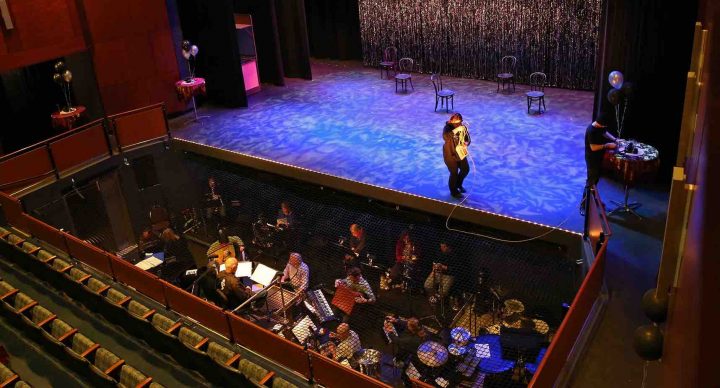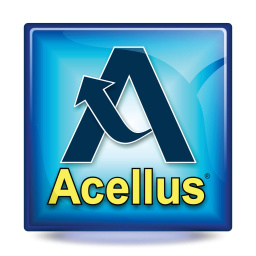Collaborative Theatre

Course Features
Course Details
Course Overview
The Acellus Collaborative Theatre course focuses on the network of art forms that all work together to tell a story on the stage. Students will examine the inception of theatre and its history as well as the tools and techniques of theatre artists, both onstage and backstage. They will also explore elements of design, including scenic and costume design. The course will conclude with a look at careers in the professional and academic theatre industry.
Acellus Collaborative Theatre is taught by Acellus Instructor Thomas Czerkawski.
Sample Lesson - The Empty Stage
 This course was developed by the International Academy of Science.
Learn More
This course was developed by the International Academy of Science.
Learn More
Scope and Sequence
Unit 1 In this unit, students explore the aspects of the empty stage and are introduced to collaborative theatre. They discuss the vision a director must have and how he applies it. They consider how the theatre mirrors society. They study the origins of the performative process, Egyptian theatre, and Greek festivals. They investigate the structure of tragedy as well as Thespis and early tragedy. They inspect the structure of Greek festival. They discover the Greek playwrights who are referred to as the Big Three and delve into Greek comedy. They learn about the architecture of Greek Theatre, about Greek masks, and about the audience as collaborator. They close this unit with a look at Roman theatre. Unit 2 Next students learn what stage directions are and what they mean. They learn about the pre-production team and the production team. They discover stage management, blocking, and the stage management prompt book. They investigate stage types and scenic terms. They explore "the unities" and the fundamentals of being a playwright. They inspect Aristotle's Poetics. They study the production budget. They discuss medieval theatre as well as reading text for dramatic elements and for technical elements. They further examine design principles as they apply to the theatre. Unit 3 In this unit students explore creativity in technical theatre. They consider scene design, including safety and usability. They investigate the age of enlightenment/reason and the Italian renaissance, including its origins, how designers flourished during this period, and its opera and architecture. They study set construction including platforms, flats, and stair units. They discuss style, period, and designers, and examine Indian and Chinese theatre, as well as Noh, Kabuki, and Bunraku styles of Japanese theatre. They learn about scenic rendering and scale model, and study scenic design including floor plan and floor plan layout. Unit 4 Students next turn to costume design, including safety and usability. They explore Elizabethan Theatre, focusing on Shakespeare and the "Tennis Balls" speech in Henry V. They explore commedia dell'arte, costume rendering, and the costume shop. They investigate neoclassicism and restoration comedy. They consider make-up, including wigs and beards, safety and usability, and using make-up to look older or younger. Unit 5 In this unit students explore lighting including lighting design, safety and usable features, the McCandless system of lighting, lighting plot, and lighting instruments and gels. They study Italian opera, theatre riots, and romanticism. They consider Cyrano de Bergerac and the playwright, Goethe. They investigate musical theatre, realism, and naturalism. Following this unit students are presented with the Mid-Term Review and Exam. Unit 6 Next students study expressionism, epic theatre, and symbolism. They explore sound design, including equipment and safety and music. They learn about the Licensing Act of 1737. They investigate the French playwrights. They discuss running crew with emphasis on wardrobe and wardrobe techniques. Unit 7 In this unit students focus on the scene shop and set construction. They study safety in the scene shop, and then learn about basic hand tools, measurement, handheld power tools, and stationary power tools. They examine the table saw, the miter saw, the radial arm saw, and the band saw. They investigate the construction of platforms and flats, and consider scenic painting. Unit 8 Students explore props in this unit, beginning with prop design and safety. They consider scavenging for props and building props. They learn about prop design and the properties list, as well as running crew for props. Students then study Anton Chekhov, Maxim Gorki, and Vsevolod Meyerhold. They investigate the fly system and basic rigging, and examine Max Reinhardt and Serge Diaghilev. Unit 9 In this unit students consider acting for the stage. They explore the rehearsal process and the production calendar. They evaluate the technical rehearsal and the dress rehearsal. They learn about the box office, about marketing for the theatre, the playbill, dramaturgy, comedy, and farce. Unit 10 Next students study the qualities of the theatre professional. They explore the theatre resume, including documentation of their body of work. They discuss entertainment industry unions, and then focus on theater careers, including the following: scene design and construction; lighting and sound; costume and wardrobe; make-up, hair, and wigs; props; acting and directing; research and history; musical theatre; dance and choreography; playwright; stage management; and box office management and marketing. Following this unit students are presented with the Final Review and Exam.
This course does not have any sections.


